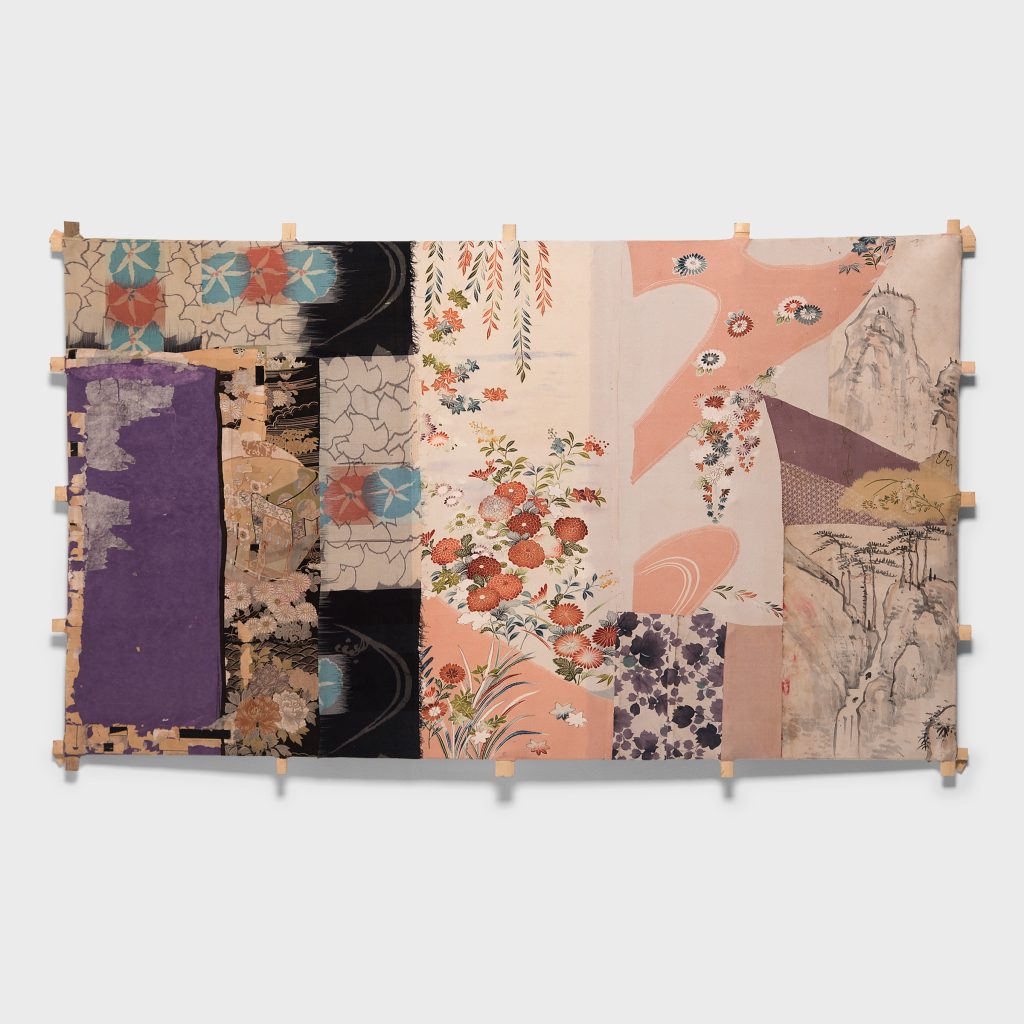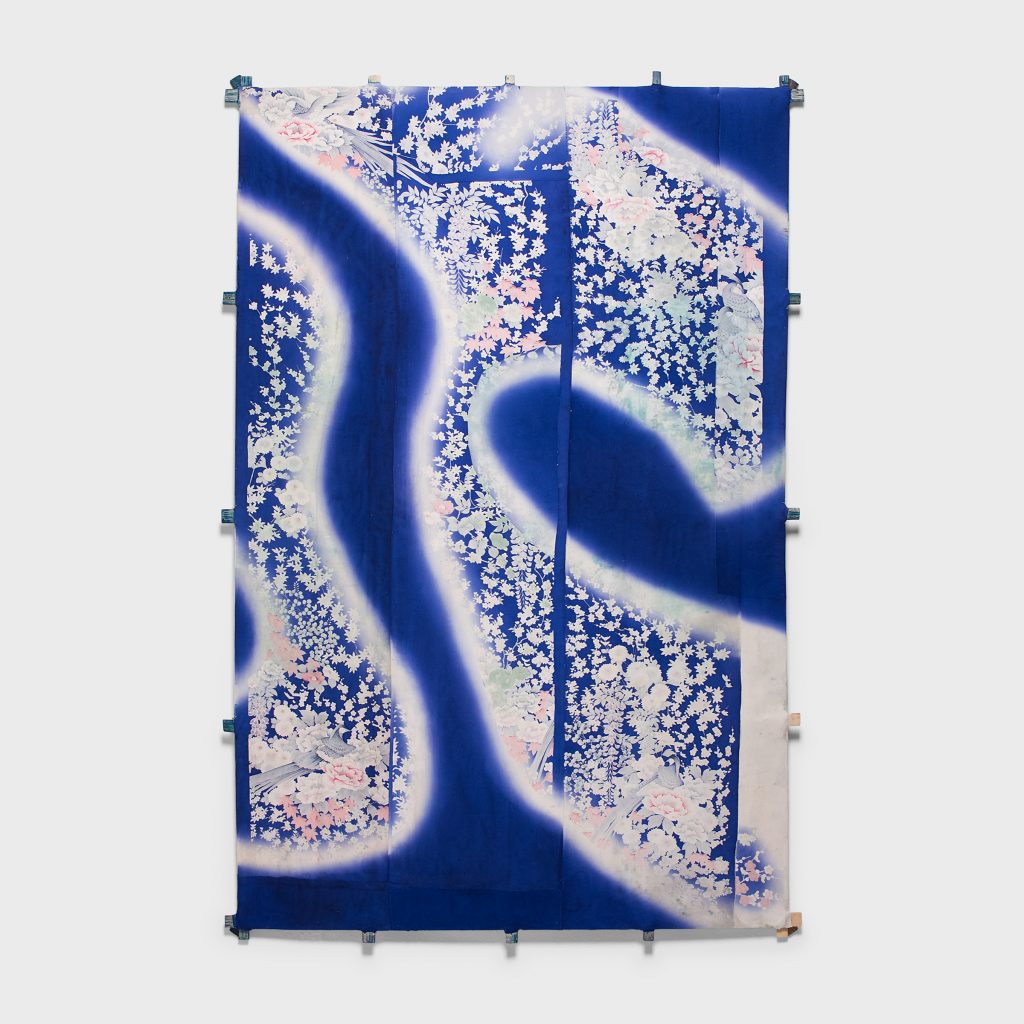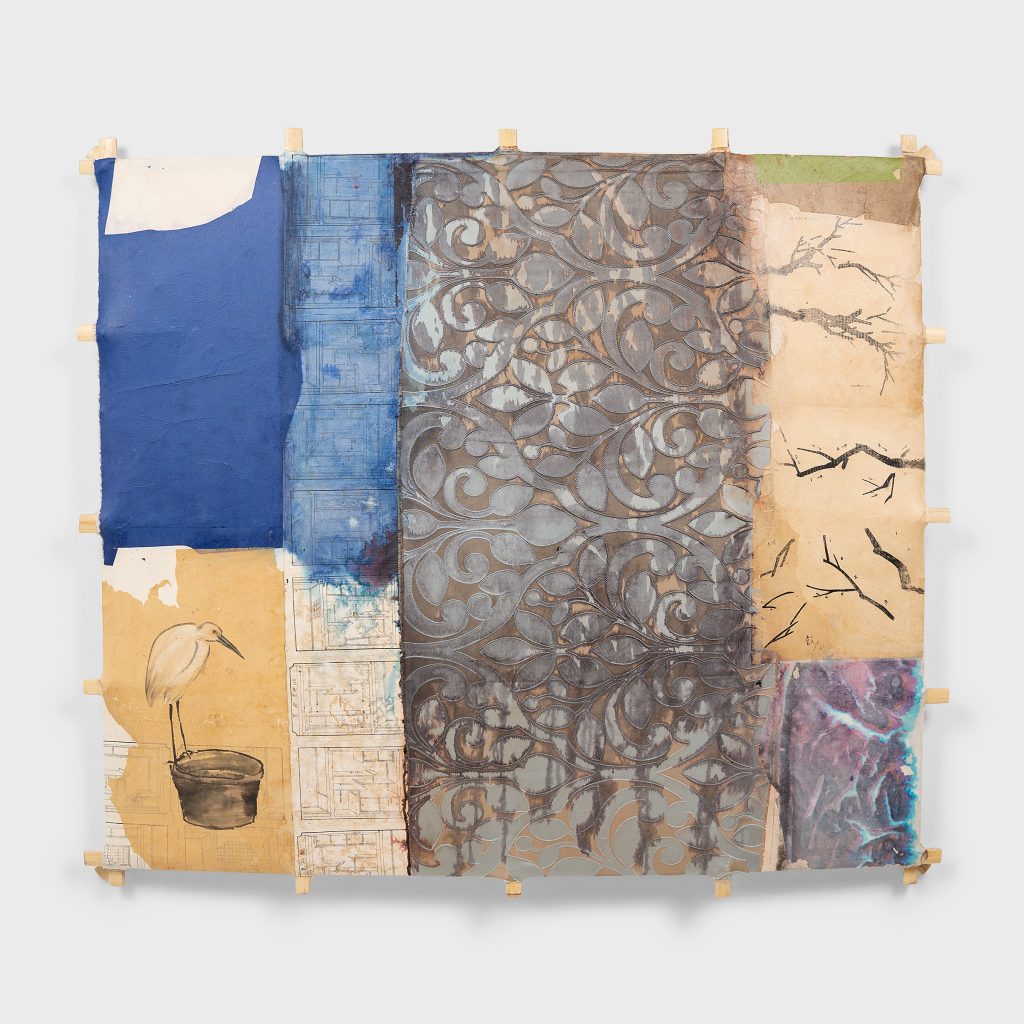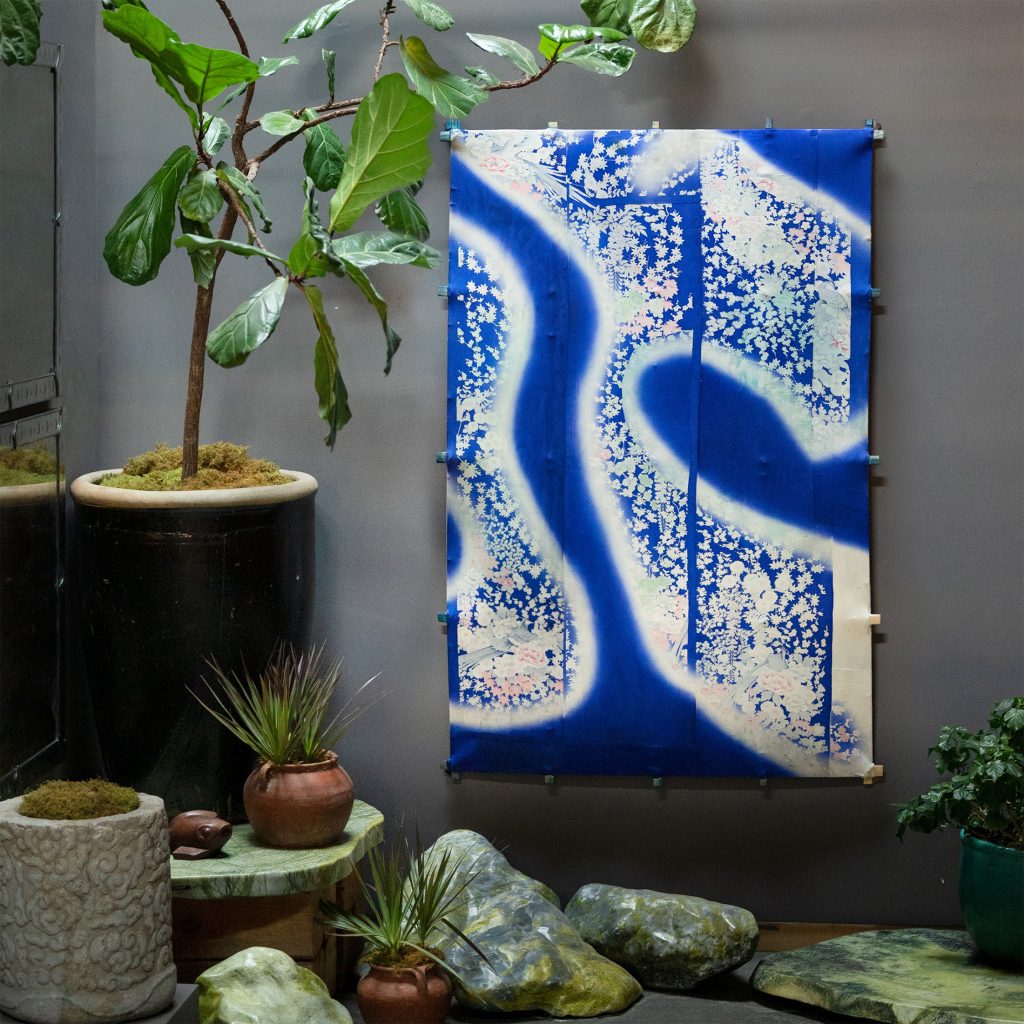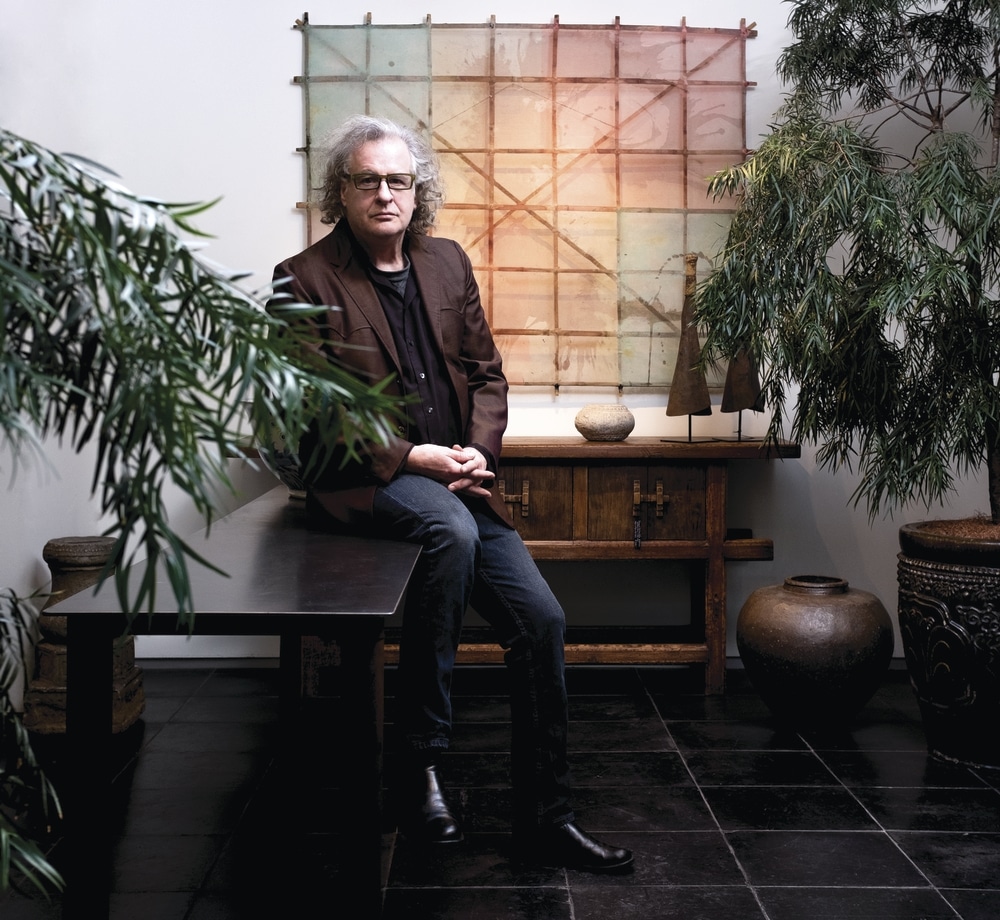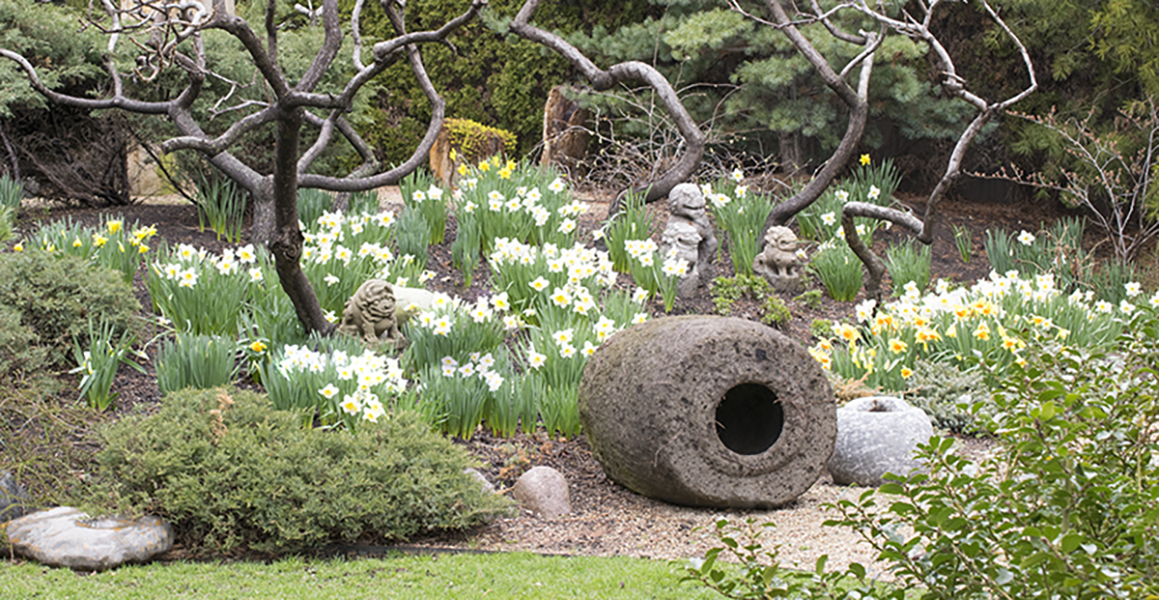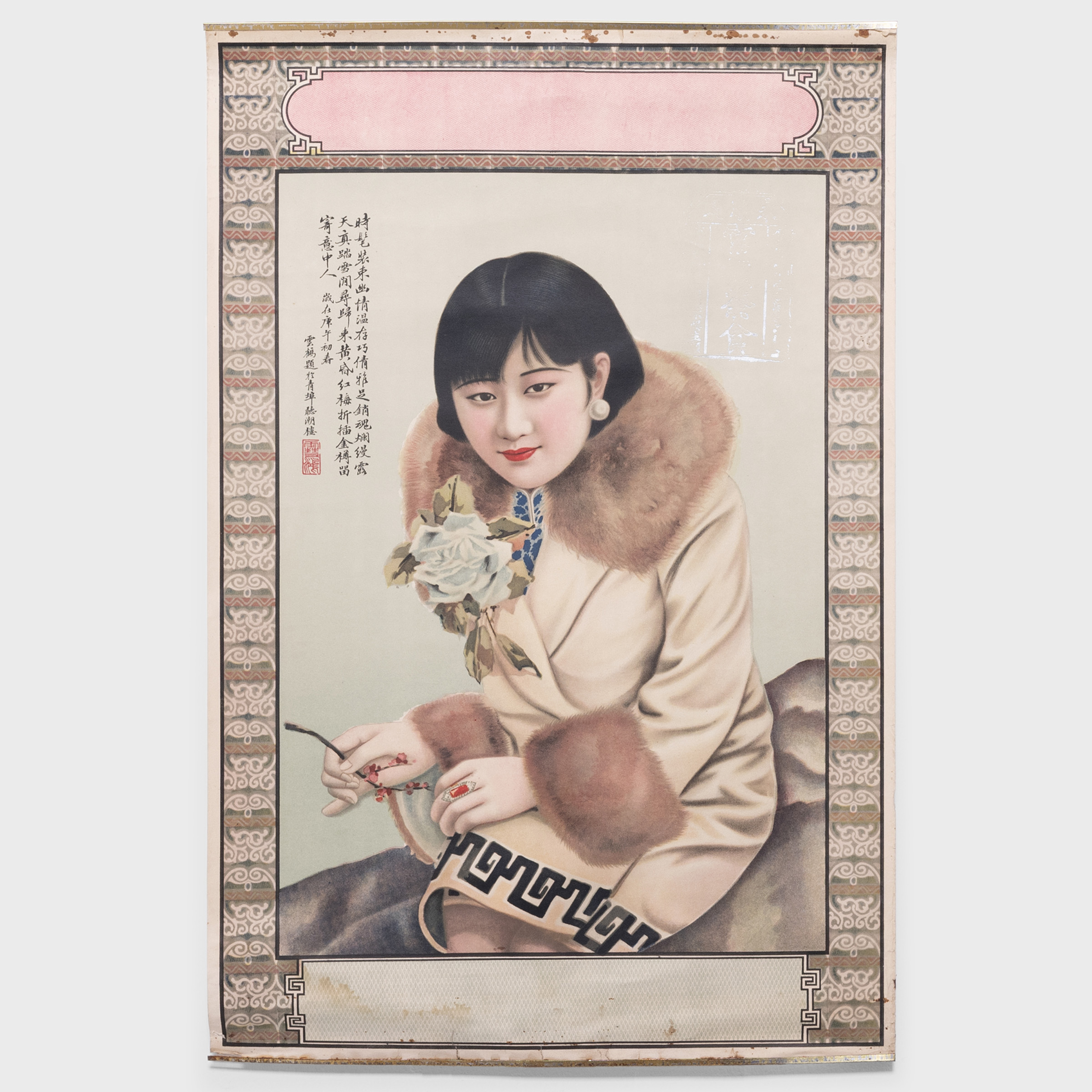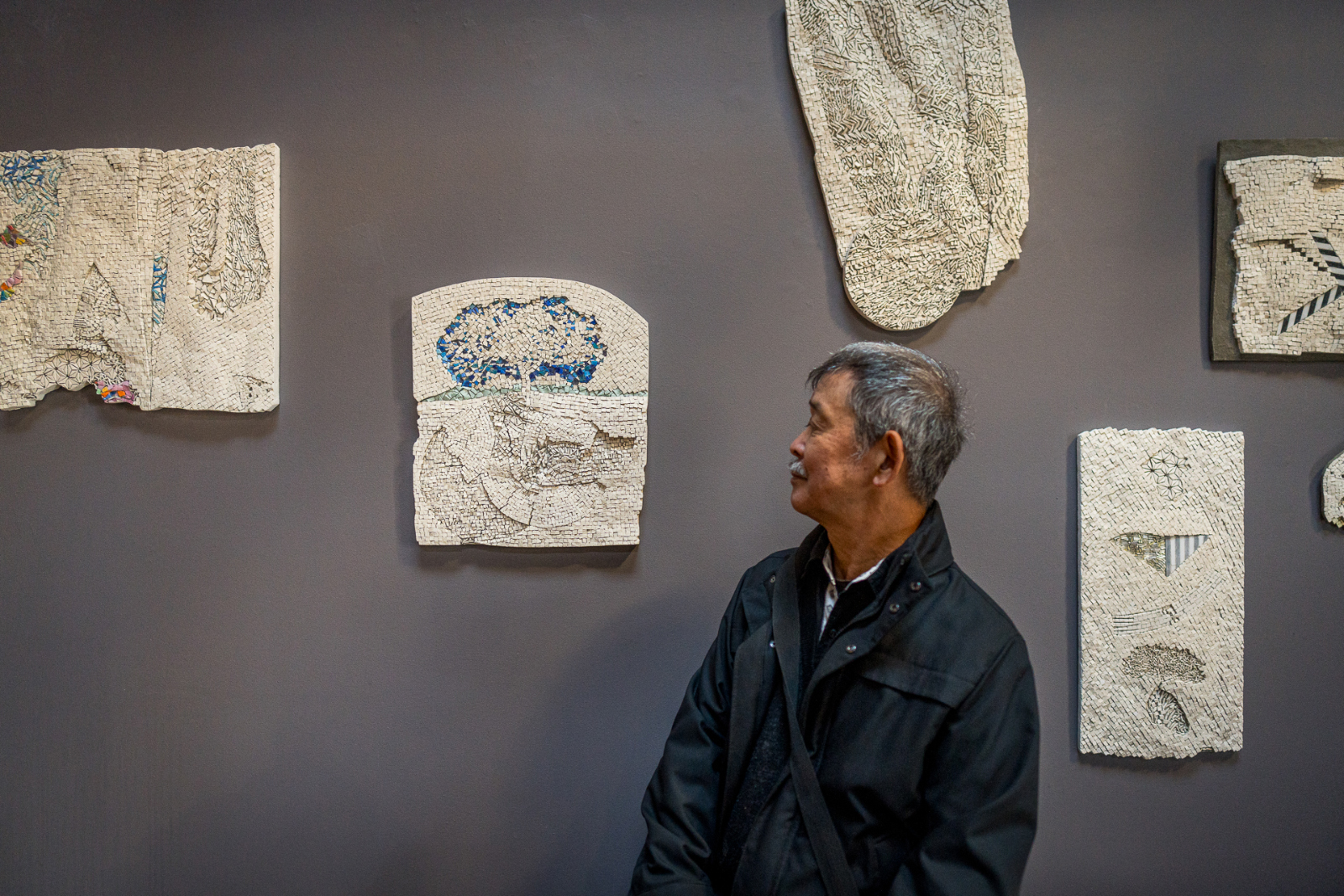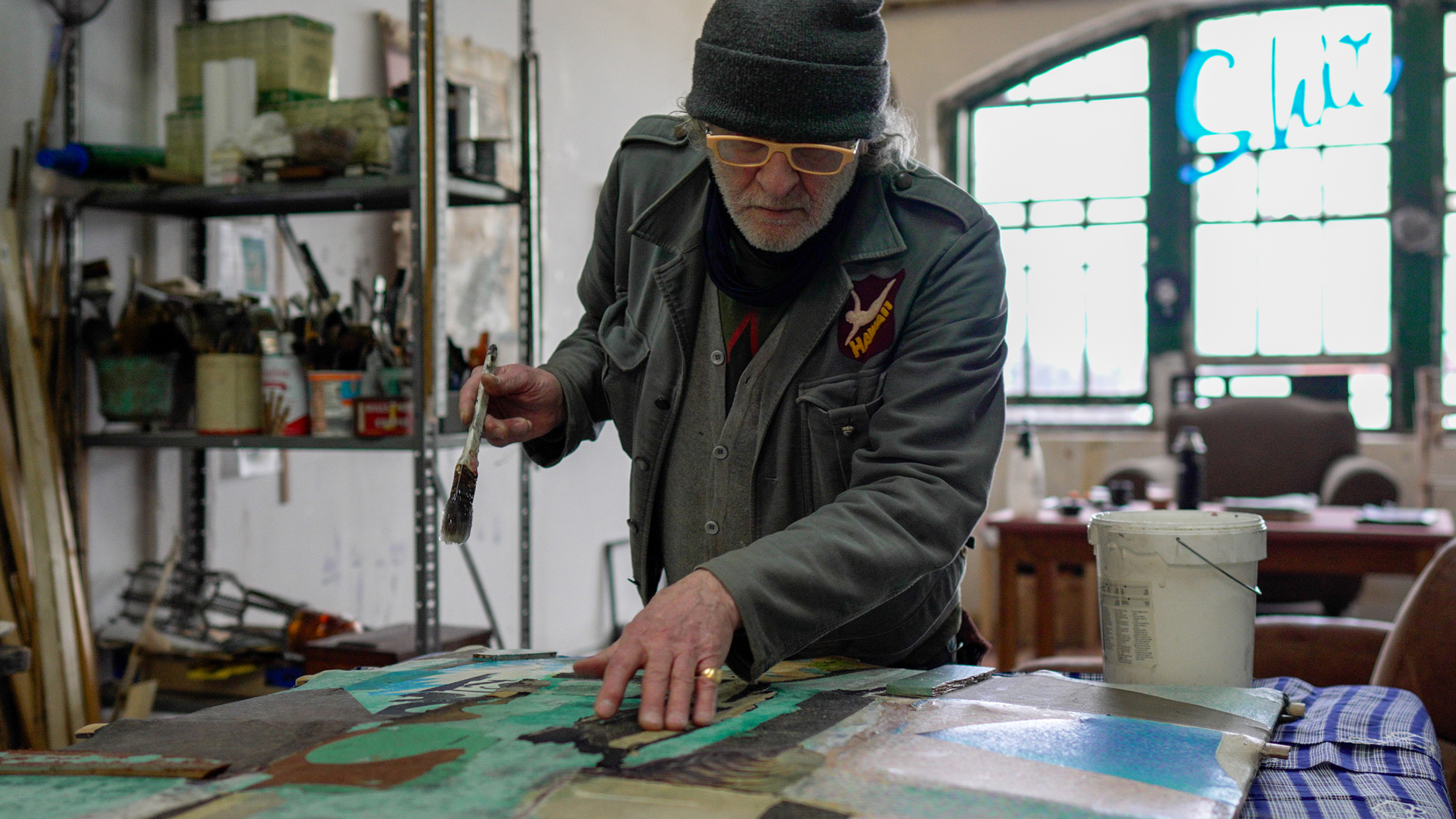
Michael Thompson: Studio Visit
The work of Chicago-based artist Michael Thompson defies even the most ardent attempts at classification. He’s the kind of creative whose technique, spirit, provocation and form is always cut with a little mischief. A graduate of the School of the Art Institute of Chicago, Michael Thompson’s body of work spans across a range of art forms, from experimental postal art to paper collage to sculptures assembled from scrap metal and ceramic shards. Regardless of the medium, each of Thompson’s works is layered with fragments of past lives and bygone memories, measured in the form of antique fabric remnants, printed ephemera and other found elements collected during his travels.
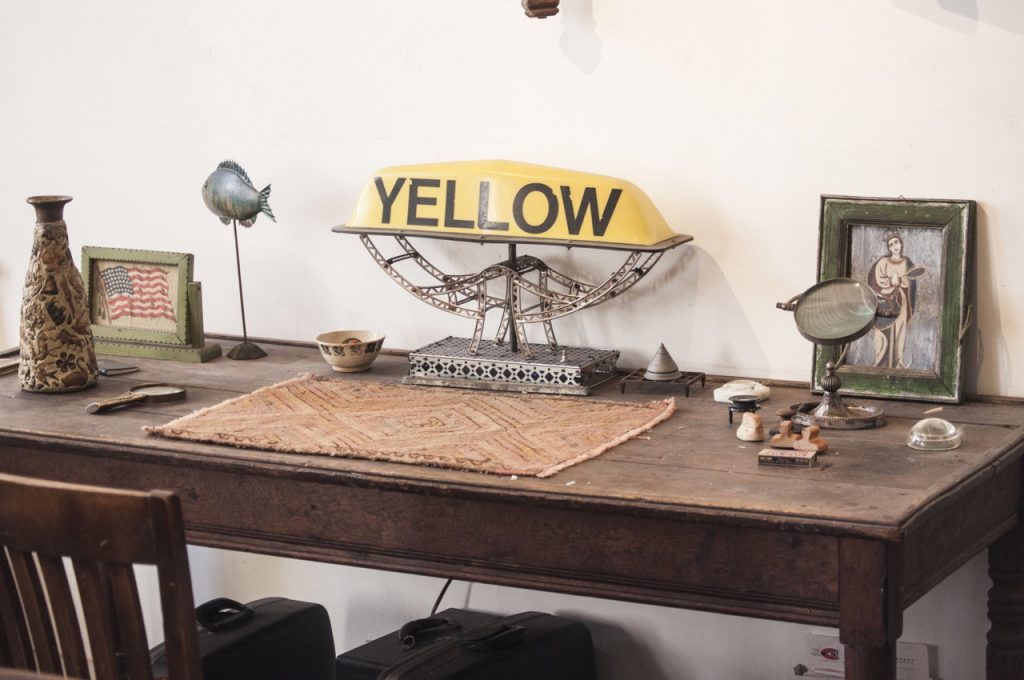
His long-running Postage Stamps project—a series of fake stamps he conceived, printed, perforated and mailed—has traversed hemispheres and earned him a reputation as both a legend and a dissident. A collaboration with fellow artist Michael Hernandez de Luna, Thompson’s fabricated stamps employ borrowed imagery and well-chosen text to make sardonic political commentaries on a miniature scale. Often irreverent, sometimes critical, and always visually captivating, the Postage Stamps project encapsulates the artist’s unique visual language and demonstrates the art of collage that informs so many of his other art forms.
PAGODA RED exclusively represents Michael Thompson’s kite creations, an ongoing series of large-scale collages set on split bamboo frames that bridge flat art and wall sculpture. Here, the artist describes the genesis of his kites, his stealth stamp campaign and why creating art can be risky business.
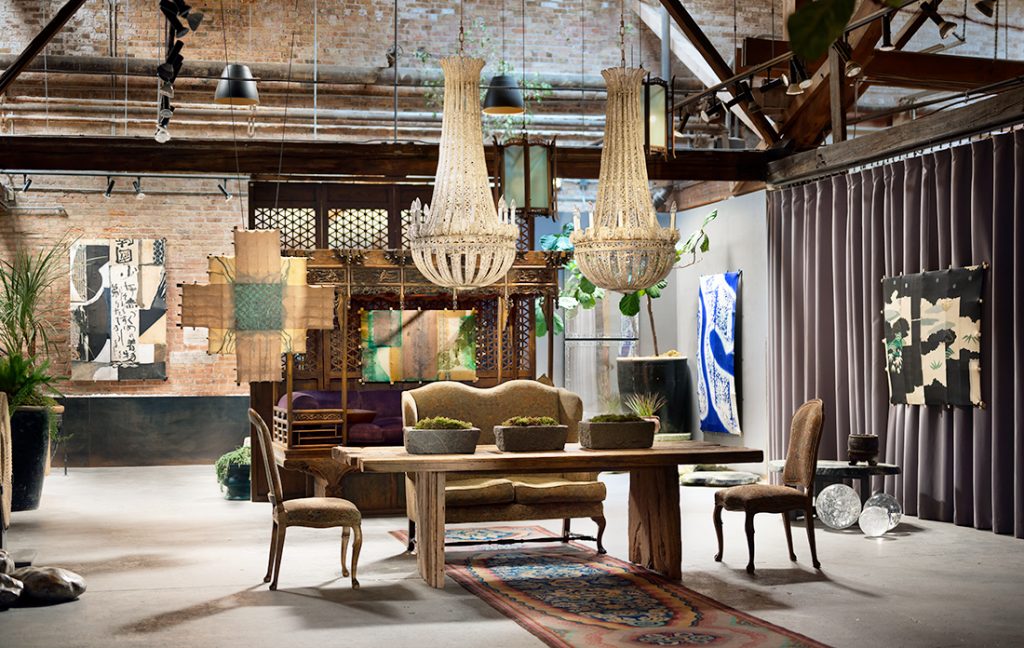
PR: Tell us about the kites. When did you begin to create them?
MT: I began making kites on a lark. While attending the School of the Art Institute, a notice announced a kite-flying contest with the award listed as a case of beer. It was all the motivation I needed. A friend and I built a five-foot diameter round kite, which we were sure would be a winner. Sadly, the day of the competition dawned calm and windless, and our kite never left the ground. The next day though turned blustery, and our kite soared.
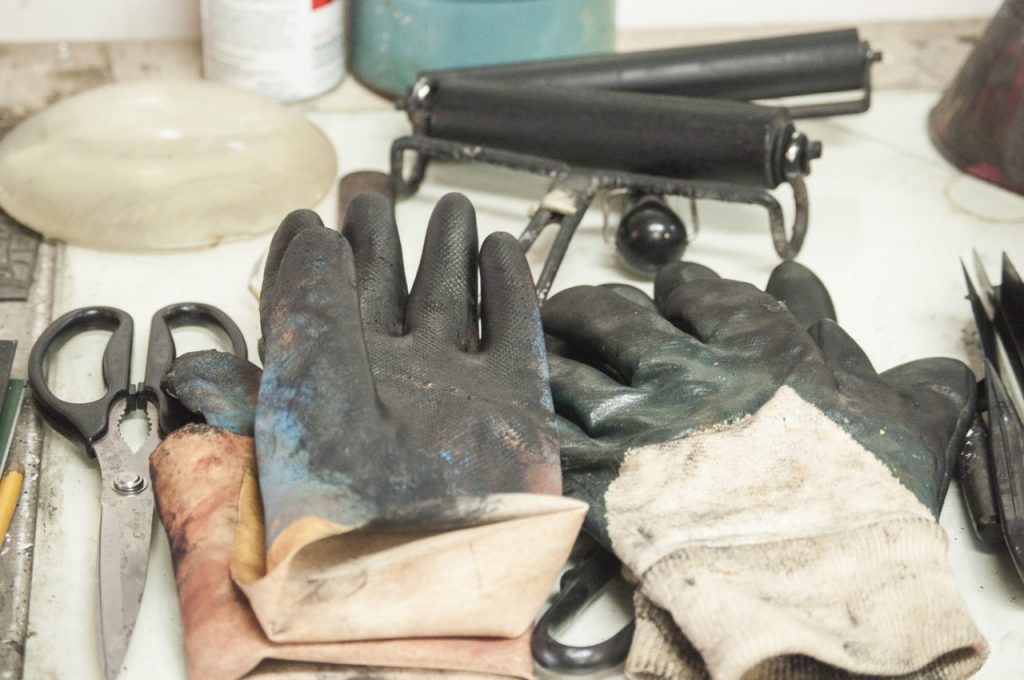
PR: What inspired you to make kites, as forms?
MT: Kites appealed to me, as they provided a medium for painting that didn’t seem as adamant or demanding as canvas. They seemed more whimsical, accessible and experimental. They were also sculptural and could be hung from the ceiling, which struck me as an underutilized space.
My girlfriend at the time knew the director of the Goodman Theatre, Gregory Moser, who agreed to do a show of kites in the lobby. So a friend and I spent a month making kites and hung them in the lobby. The show was a success and even received favorable comments from Queen Beatrix of the Netherlands, so I was told.
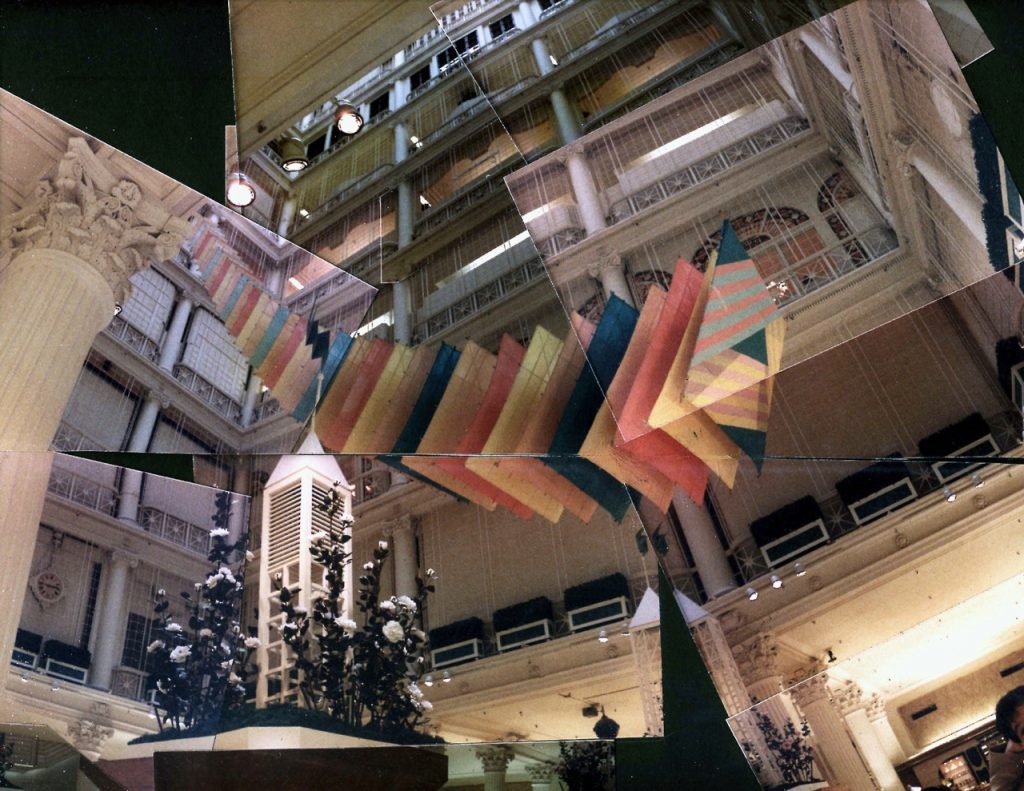
PR: Can you speak a bit about materials? The kite frames are made of bamboo; how do you make your material choices with these works?
MT: Bamboo is a wonderful material. It can be split into the thinnest of staves to construct exquisite miniature kites or support massive sculptural constructions. I have hung a 100-foot segmented kite in the atrium of the Marshall Field’s State Street store, a 50-foot kite sculpture at Navy Pier, and a small kinetic kite sculpture in an atrium on Franklin Avenue.
Bamboo can be heated and bent to hold a curve while still retaining its flexibility. To construct the kites, I split the bamboo, shave the inner side smooth, tie the staves into lattice framework, attach muslin or canvas to the face of the kite, size the fabric, seal it with Polyvinyl acetate and then paint, stain, collage, adhere papers and work the surface in any number of ways.
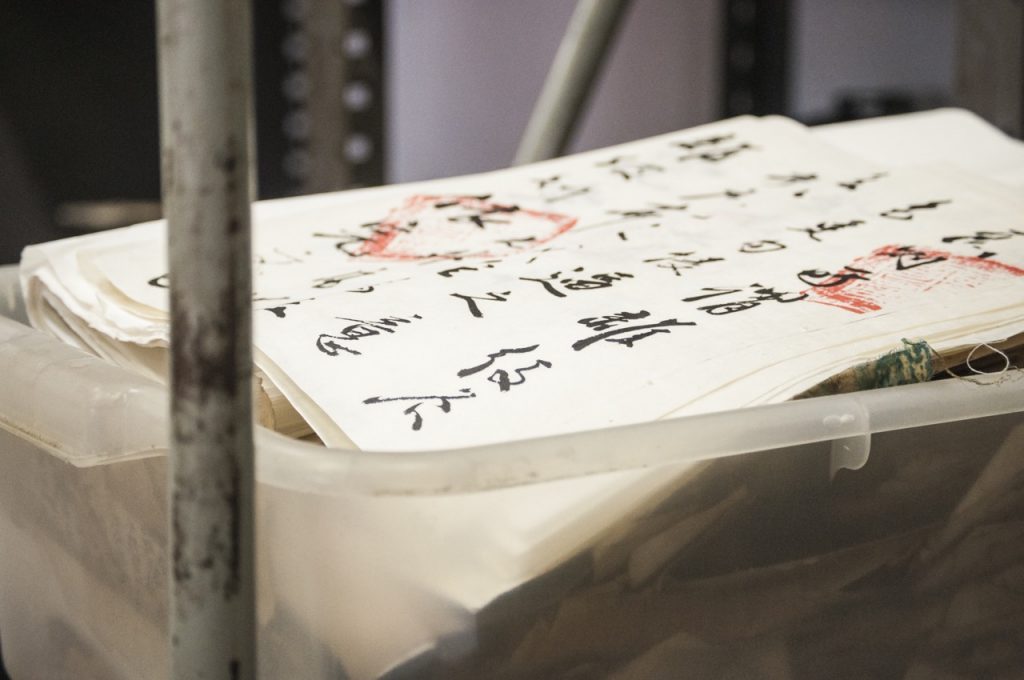
PR: Could you tell us what inspires the motifs on your kites?
MT: The kites have developed over the years, beginning as hard-edged abstractions morphing into balanced presentations of Orientalia, then large collages. Eventually they assumed a more painterly aspect. As my supply of eastern material became depleted, I began employing just bits of calligraphy and imagery, distressing the surface and envisioning them less as decorative objects and more as art. Recent kites have been influenced by the work of Robert Motherwell and Franz Kline that are predominantly black and white.
PR: Can you describe how different the artistic/creative process is when creating a kite versus your postage stamps or your paintings?
MT: As an artist, I pursue various mediums, including printmaking, sculpture, assemblage, collage and philately. The last discipline involves the making and mailing of fake postage stamps. Using Photoshop, I create stamps for various countries, print them in sheets, perforate the sheets, glue them on envelopes and drop them in mailboxes in the appropriate country. Friends tell me when they are visiting a country and I will make some inappropriate stamps for them to post for me. I have successfully had stamps mailed from dozens of countries.
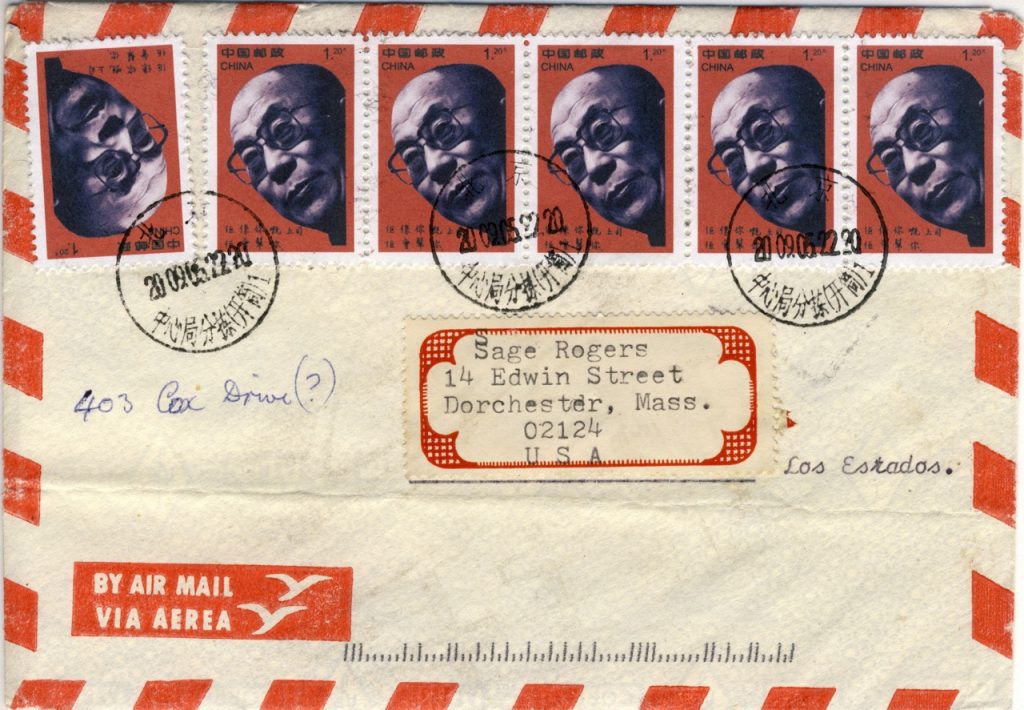
Work from Michael Thompson’s Postage Stamp series
PR: Tell us how your love of Asia began.
MT: It was the stamp project that propelled the kites in a decidedly Asian direction. In 2002, I was invited to a Stamp Art symposium on Jeju Island in South Korea. On that trip I visited antique stores, where I discovered a wealth of old scrolls covered with paintings and characters, old kimono fabrics, illustrated books and colorful rice papers. They were a revelation! I bought them by the armful, returned to my studio and began festooning the kites with these new materials. The kites began to assume a formal design. I felt the scrolls deserved to be honored and framed as the central elements.
I began traveling to Korea every year to buy paper ephemera and soon expanded my itinerary to include China, which proved the most exciting source for materials. I returned half a dozen times. Traveling also provided an opportunity to engage in my fake stamp project, so prior to each visit, I would create a fake stamp, prepare the envelopes and then, when wandering around, simply drop one into a mailbox. China offered unending possibilities for ironic engagement with subject matter for stamps. Various creations included the man stopping the tanks at Tiananmen Square, The Falun Gong, the Dalai Lama and the hacking of Google’s website. The envelopes were never addressed to me, but rather addressed to friends and relatives who then forwarded them to me.
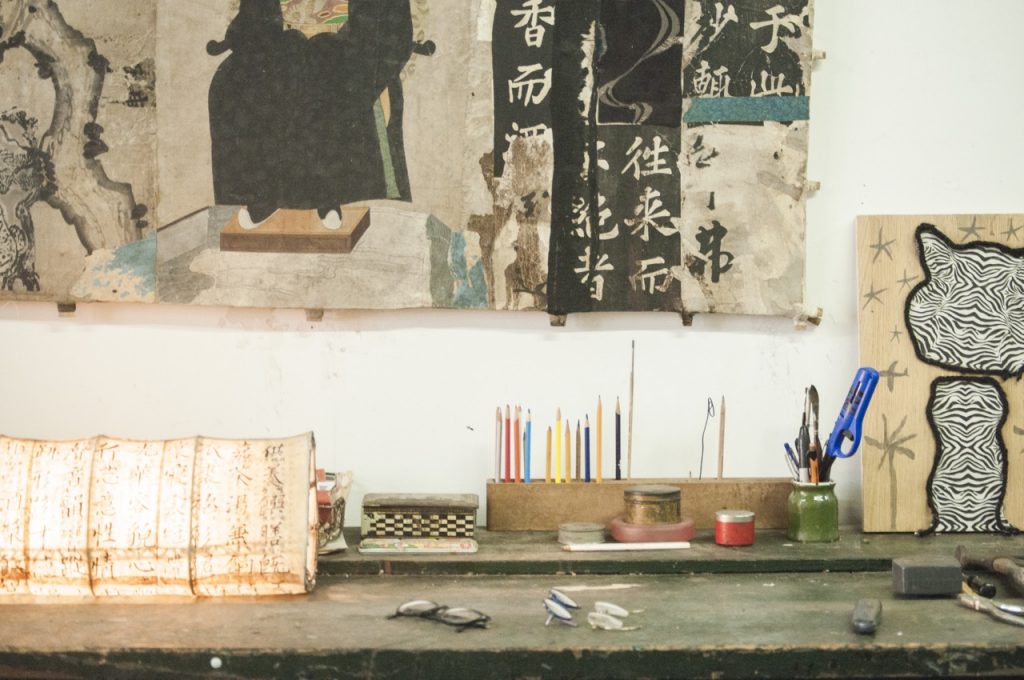
PR: Any stories (good or bad) you’d like to share about your time in Asia?
MT: In 2011, I was invited by the Duolun Museum in Shanghai to participate in an ink painting show, and I planned to spend two months in Shanghai creating the kites for the show. I had a studio apartment and had begun assembling the materials needed to make the pieces, when one night there was a knock at the door. Three police officers stood there asking to see my work papers, which I had intentionally failed to apply for, as I feared that the process would unearth my decidedly anti-state activities and sabotage any chance of admittance to the country.
When I failed to produce the documents, they told me to appear at the police station the next day and begin the application. I did. A week later, I received a call from the director of the Duolun Museum requesting that we meet to discuss the upcoming show. When I arrived, I was met by 15 individuals and was instructed to sit. I was then informed that I was going to be questioned about my trip to China the previous year and specifically about any letters I had posted. It quickly became evident that they had discovered my stamps online. I was told by my interpreter that they were very angry with me and that I should be very polite.
It soon transpired that I was the guilty party responsible for the fake postage they had confiscated over the course of the past six years. I admitted my guilt and was given the choice of arrest or deportation (given that I was a guest of the State) and after a bit of consideration, I chose deportation. After signing a confession, I was driven to my apartment to gather my belongings and taken immediately to the airport in a three-car convoy. There, I was told to buy a ticket (which further incensed me) and flew to Seoul. China has subsequently on numerous occasions, refused to issue me a visa.
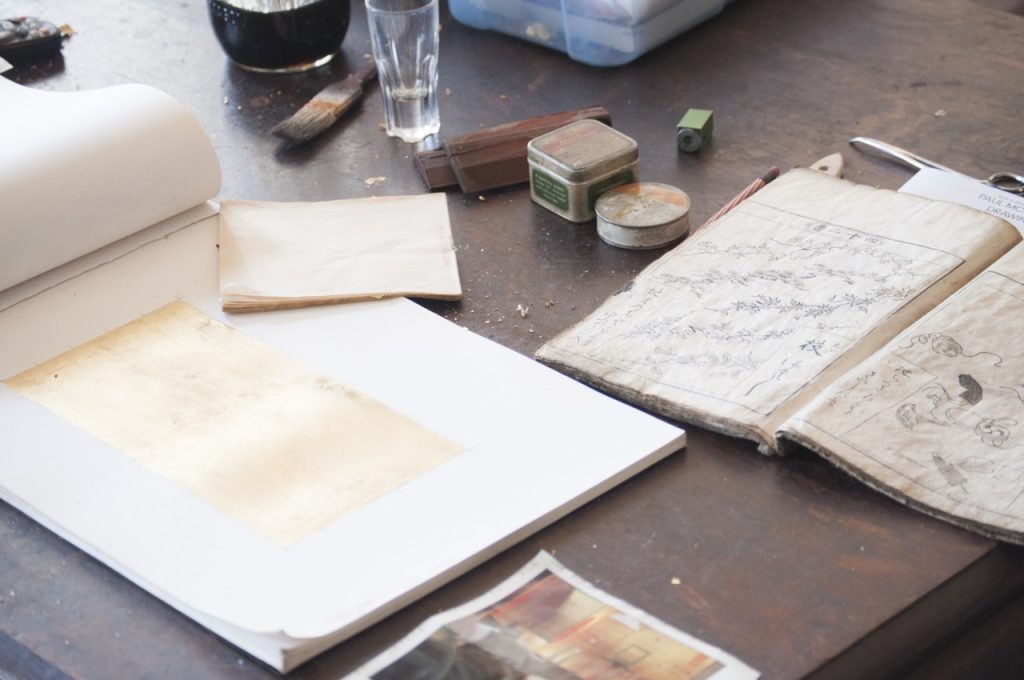
Detail of Michael Thompson’s studio
PR: Do you consider yourself a collector? If so, what do you collect?
MT: My personal collection includes 19th century English ceramics, which has taken me to London where I gather 18th and 19th century pottery shards along the Thames River at low tide in a practice called “mudlarking.” In turn, I use the shards to decorate stoneware pottery in the manner of memory jugs.
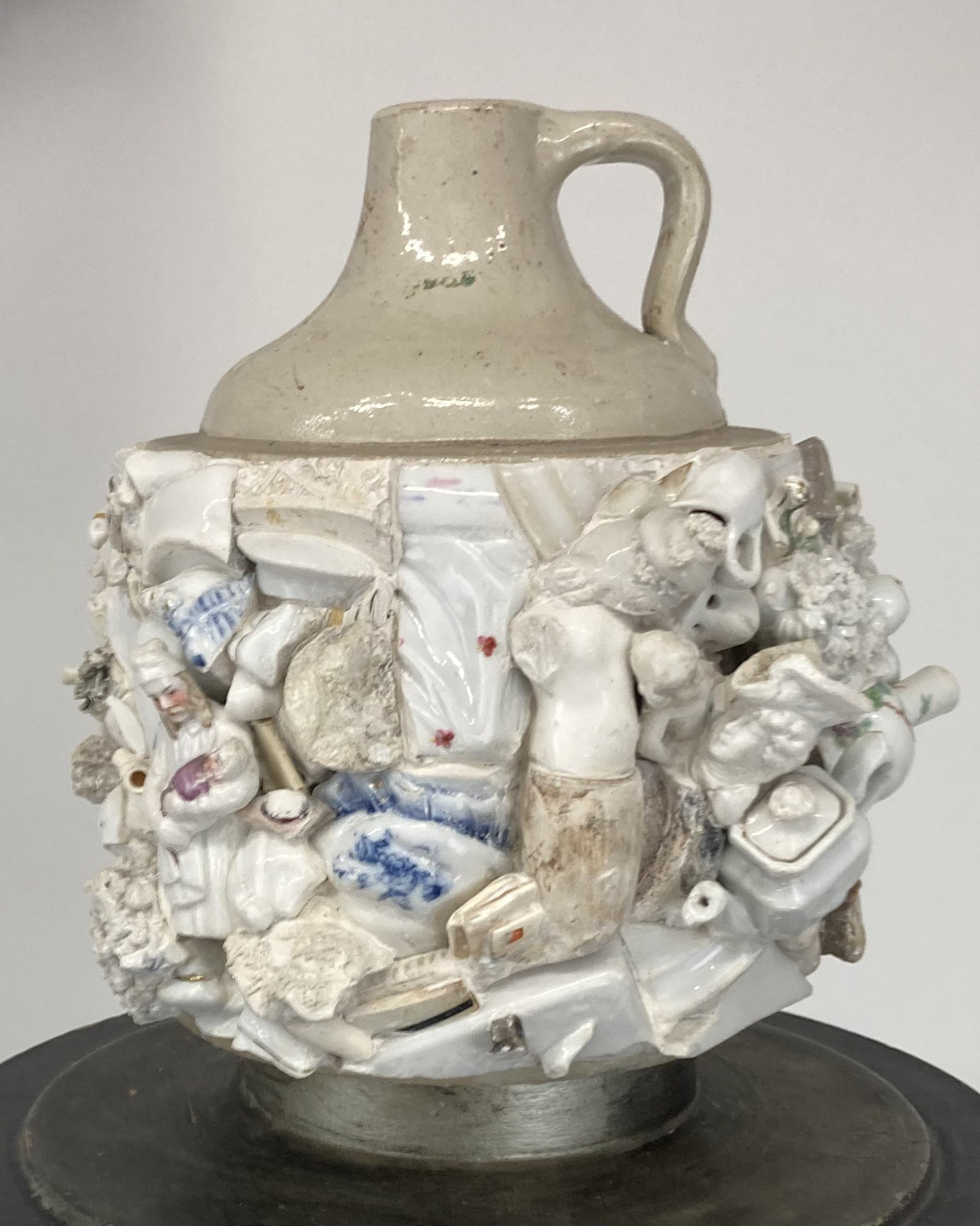
Also known as forget-me-not jugs or spirit jars, memory jugs are African American folk art objects that honor a loved one who has recently passed. Small tokens and mementos of the deceased are gathered and affixed to the exterior of a jug or vase, an abundance of memories that celebrates a life lived to the fullest.
Thompson applies this tradition to his own practice, adorning stoneware vessels with a kaleidoscope of ceramic shards, found objects, and pocket-sized trinkets he has collected from the banks of the Thames, Kyoto, Turkey, and Mexico. A tactile assemblage of this and that, each jug honors the lost memories of generations past and his own memories of personally discovering each item.
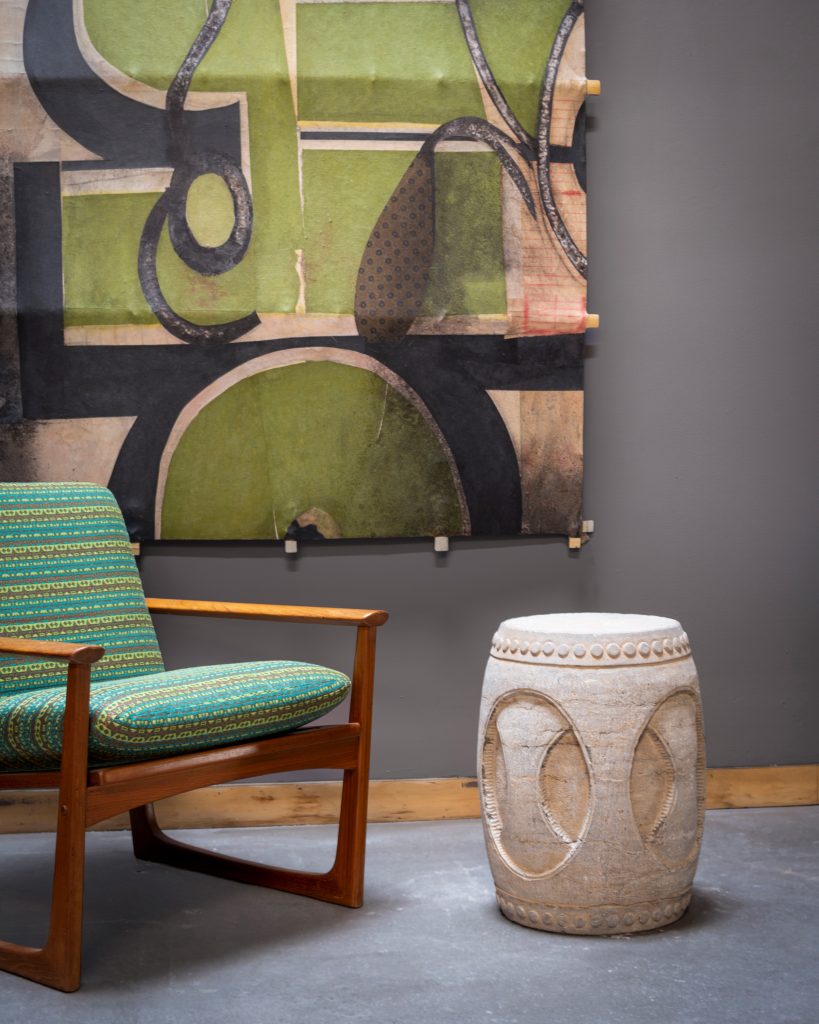
PR: What do you want to express in the work? How would you like each kite to be appreciated?
MT: I like to envision the kites as a sort of narrative, a pictorial whole, with a focus and threads, a framework of balance and tension. For me, the most successful kites provide a circuitous tableau that a viewer enters and traverses. These kites have been a wonderful medium to explore the myriad forms and methods that graphic inventiveness offer. And all for the prize of a case of beer.
Join us on Saturday, April 27th for the opening of Thompson’s upcoming exhibition Michael Thompson: Dreams in Flight at the PAGODA RED gallery. In addition to Thompson’s most recent fine art kites and mixed media collage, Dreams In Flight adventures to the realm of ceramics.
To see more of Michael Thompson’s work, view his fine art kites at PAGODA RED
Hero Image: Portrait of Michael Thompson in his Chicago studio.

Explore More
